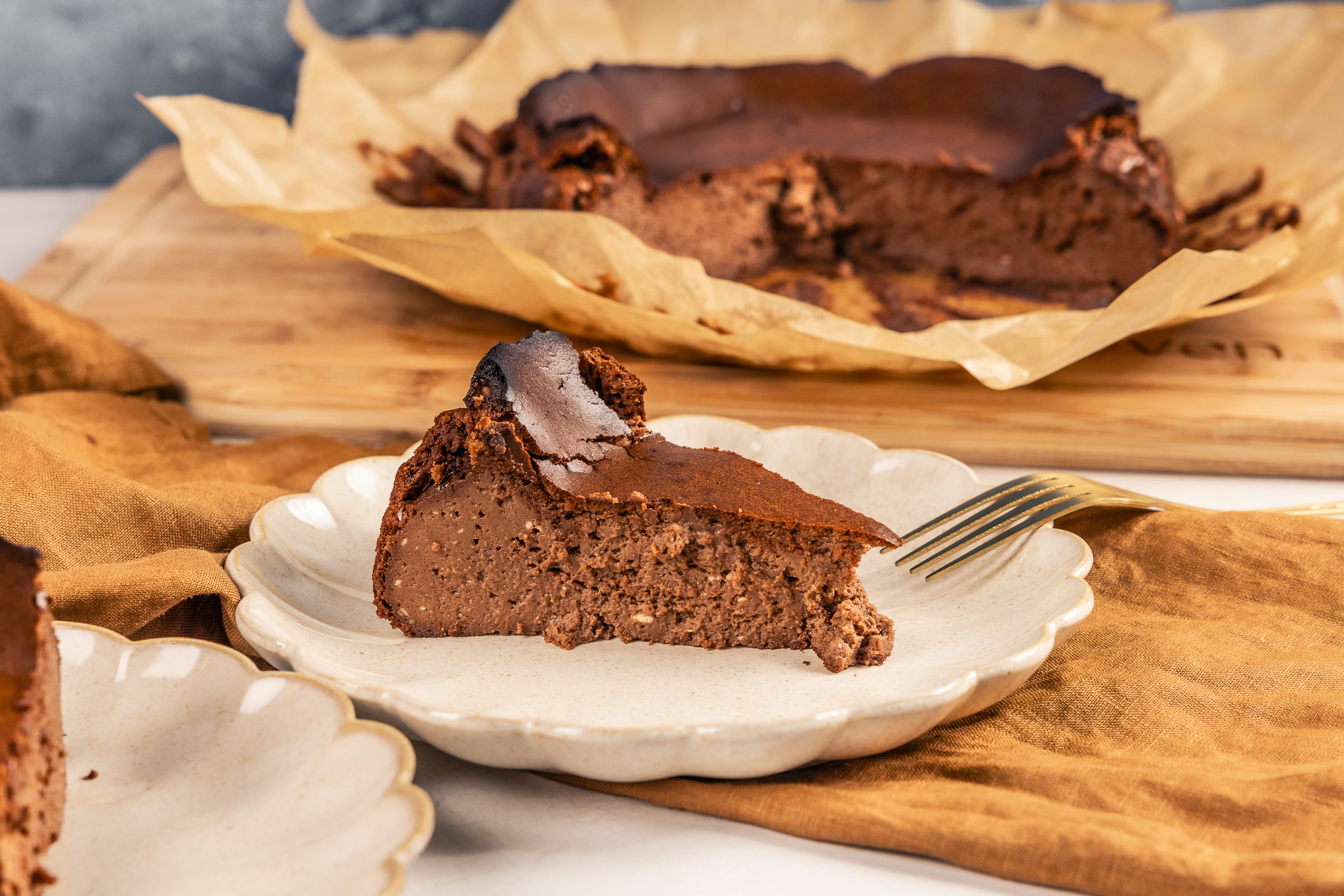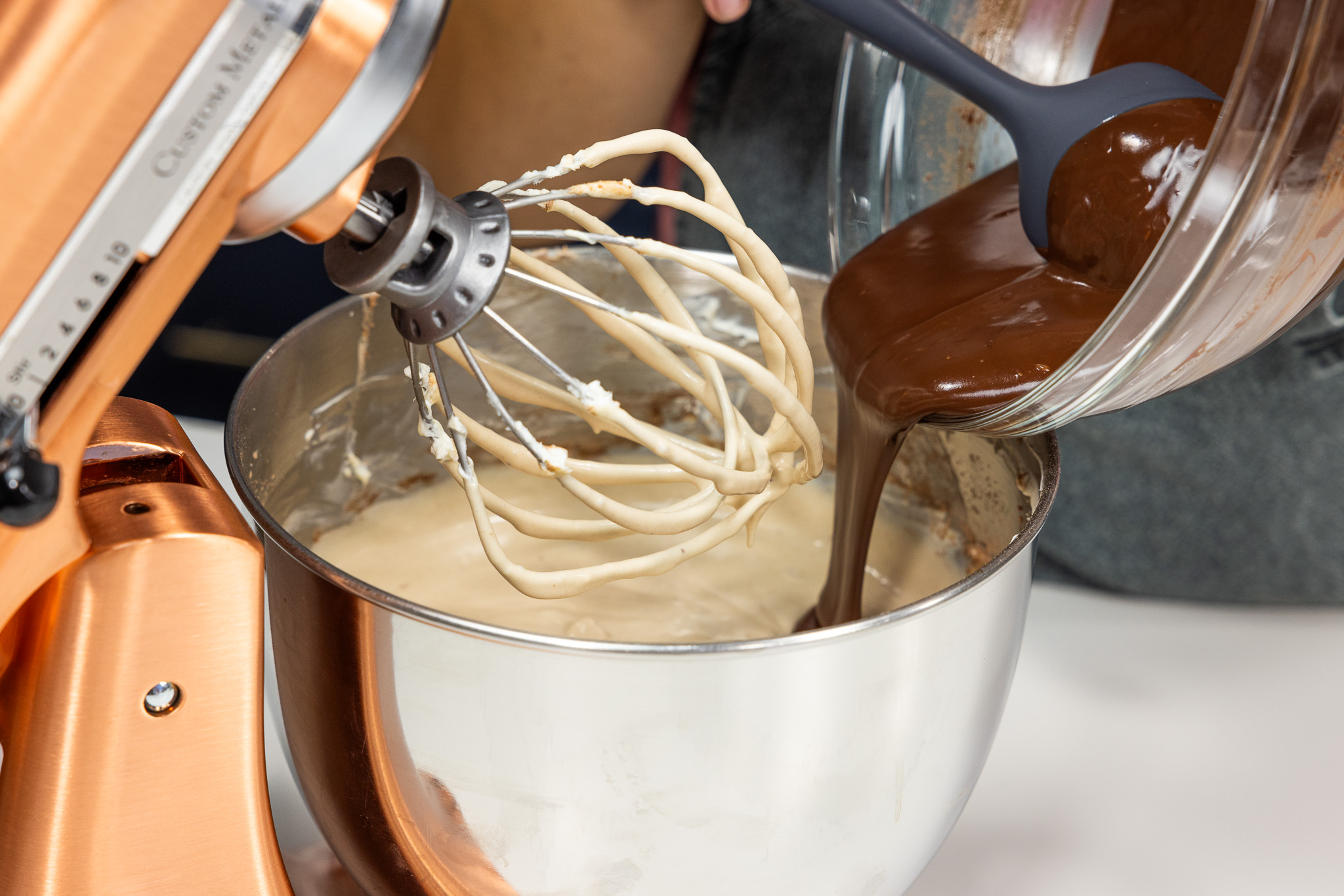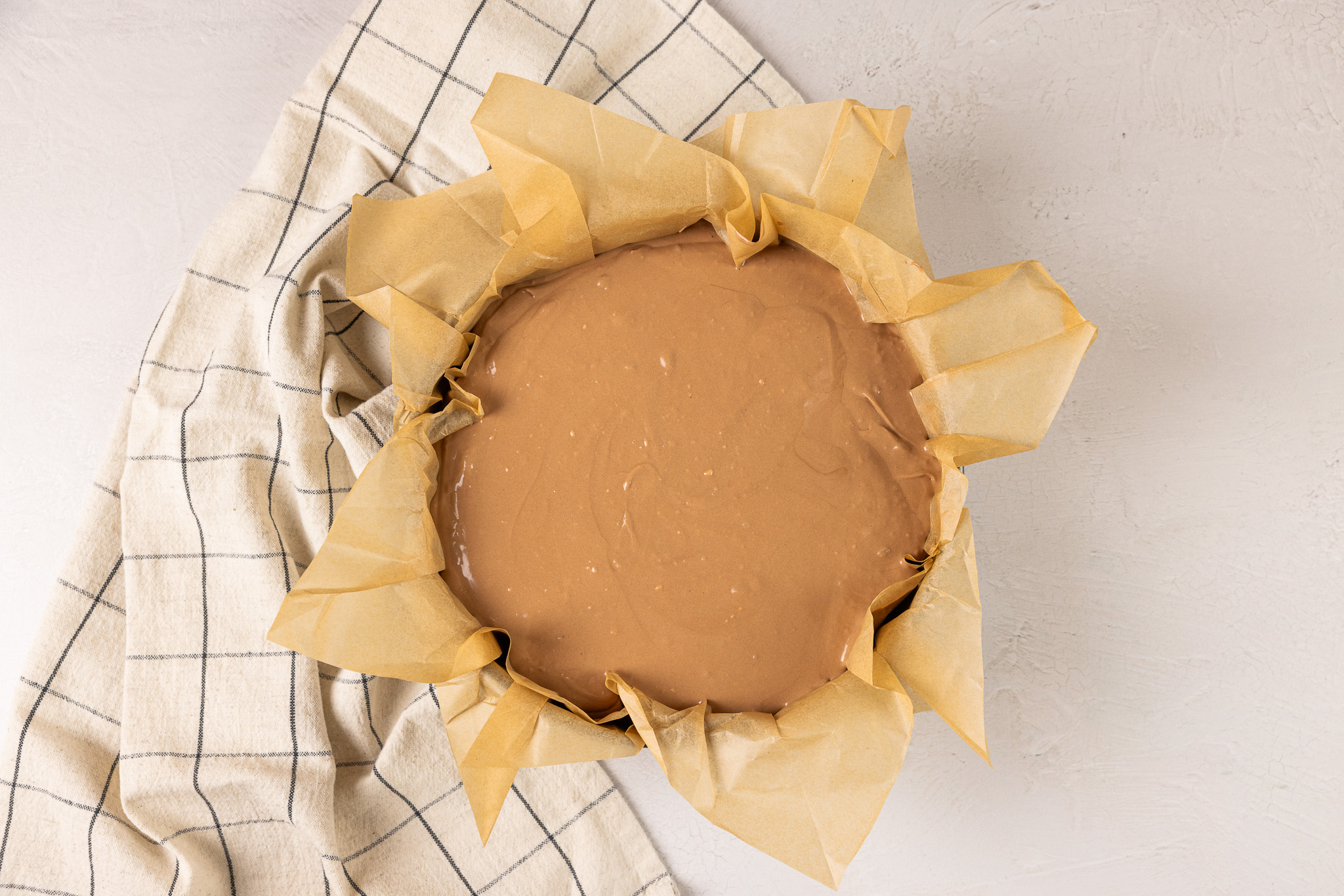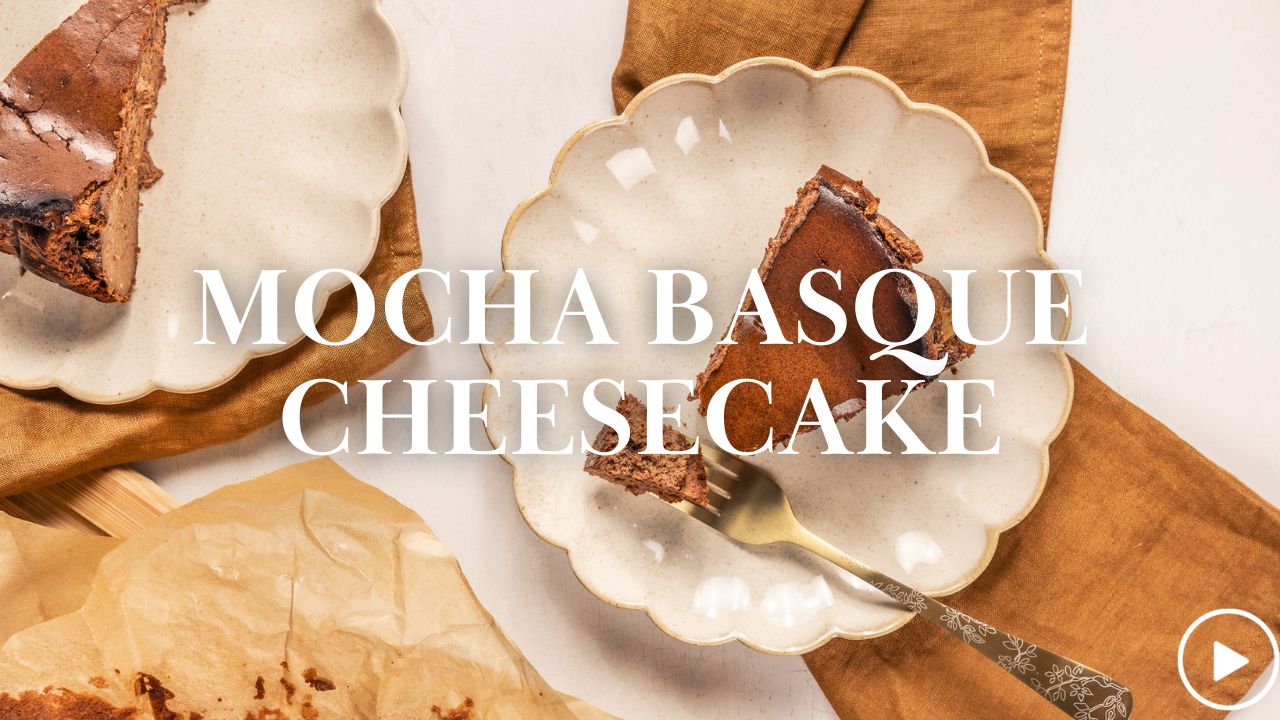
While a recent dessert darling on social media, the origins of the Basque Cheesecake go back to the 1980s and a family restaurant in northern Spain.
The "basque burnt cheesecake" was created by Chef Santiago Rivera as a way to experiment with new ingredients and streamline production at his family's small restaurant - La Viña in San Sebastián. The result is a perfectly rustic dessert with a caramelized top and a jiggly, custardy center.
If you're not already convinced to try it, here's the bonus. With simple ingredients and snappy fast prep time, it's traditional cheesecake's less fussy (and possibly more delicious) cousin.
A few things make Basque Cheesecake different, but the oven temperature and cooking time set it apart.

Where's the Crust?
You might notice instructions for a crust are missing from every Basque Cheesecake recipe. That's because there is no crust. Instead, this cheesecake cooks at a very high temperature, causing the edges to brown against the pan to form a silky crust-like skin.
The charring brings a depth of flavor otherwise missing from the standard cheesecake's graham cracker crust. It also means less fuss and less mess. Just mix your filling, pour it into the pan, and pop the cheesecake into the oven.
A Custardy Center
Much like crème brûlée, you pull this cheesecake out of the oven with an irresistibly jiggly center, leaving a creamy interior more reminiscent of custard than the dense center of a traditional cheesecake.
A standard cheesecake cooks low and slow, often requiring a bain-marie (or water bath). With the addition of heavy cream, the cream cheese in the Basque Cheesecake cooks evenly into a custard-like center thanks to the high oven temperature. It's an incredibly simple bake that creates an extra creamy bite.

The Burnt Top
The most distinct feature of the Basque Cheesecake is the burnt top. The high temperature of the oven will do the magic for you, leaving a charred top that adds dimension and texture.
And, while it might go against every instinct you have as a baker, leave it in the oven just a little bit longer to achieve the classic burnt top. Trust us - it's worth it!
How to Make the Burnt Basque Cheesecake
The original Basque Cheesecake uses just five basic ingredients. The technique is surprisingly simple, with just a few tricks to gain the silkiest filling before pouring and baking.
You can opt for a classic Basque Cheesecake, or level it up with flavors like the espresso and chocolate in this Mocha Burnt Basque Cheesecake recipe.
 Bring Ingredients to Room Temp
Bring Ingredients to Room Temp
Start by getting your ingredients to room temperature. As easy as setting out on the counter 30 minutes before you get started, this step will ensure all ingredients incorporate smoothly.

Double-Line Your Pan
While your ingredients come to room temp, you can prepare your pan. Double-line your pan with parchment paper to keep the creamy filling in place while baking.
You can easily line a circular pan by folding the sheets of parchment paper in half diagonally and repeating 4-5 times, as shown in the picture below. The accordion effect of the folds will adapt to the round shape for a quick lining.
(Note: A springform pan is best so you can release the sides without damaging the top of your cheesecake by flipping, but you can also use a cake pan in a pinch!)
Sift Your Ingredients
The batter will blend smoother by sifting or whisking your dry ingredients - including the granulated sugar - before incorporating. It's a small step that helps when mixing for nearly any baking recipe.
The all-purpose flour used in the recipe helps with the texture of the cheesecake but can also be omitted to make the recipe gluten-free!

How to Mix
With everything mise en place (or in its place) you can begin. You can use a stand mixer or a hand mixer. In either case, you will want to scrape down your bowl very often. The cream cheese tends to cling to the bowl at the bottom and sides. A quick scrape with a spatula throughout each stage will prevent small clumps of cream cheese and ensure a smooth filling.
In the final stages, you will want to mix on low to medium-low speed. Not at all overly sweet, you can adjust the sugar to taste to achieve your preferred level of sweetness.

Baking the Cheesecake
When ready, pour the batter carefully into your prepared pan and bake as directed. There's little left to do at this stage but bake and wait!
It's easy to spot the charred surface on a typical Basque Cheesecake. When baking the Mocha version - or any flavor lending a dark filling - you will want to pay close attention to how the color changes at the end of the bake. It will be very dark, and appear burnt with small boils (or bubbles).
Because you want to pull the cheesecake out with the center still jiggly, in some cases you may opt for using your oven's broiler at the very end to create the charred top. If using this method, be very careful and keep a close eye as it can go from great to (actually) burnt quickly.

Serving and Enjoying!
Cool the cake on a wire rack for 30 minutes before releasing the sides of the pan and serving. Optionally, some prefer to chill the cake in the refrigerator for at least 2 hours (or overnight) before serving.
The depth of flavor in a Basque Cheesecake eliminates the need for toppings and fillings. However, you can always add a little extra flair by pairing it with caramel sauce, a simple berry compote, or cold foam cream.
Ready to try your hands making a Basque Cheesecake? Try this simple yet decadent Mocha Basque Cheesecake!






